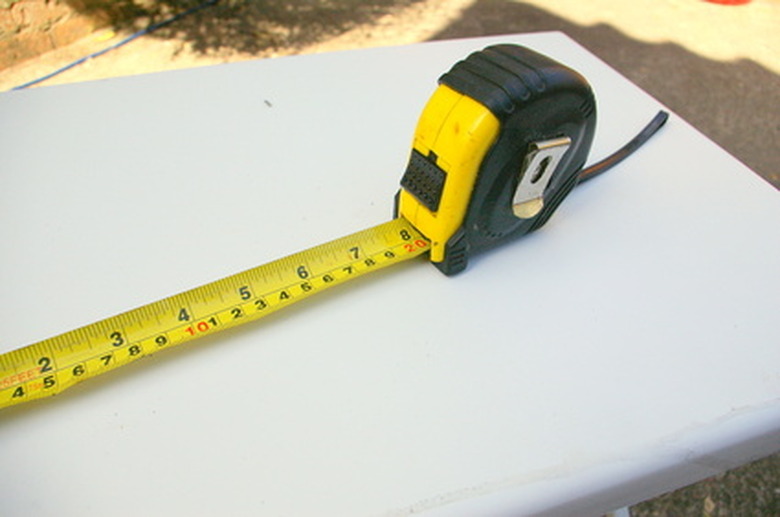Math Projects About Measurement
Thousands of examples of using math and measurements are present in the world. The list of projects spans from simple to complex. Instead of giving a person some story problems, demonstrate real-world applications of math and measurement. By figuring out the relationships between math and measurements, a new understanding of how they go hand-in-hand is gained.
Tile Measurement
Tile Measurement
Suppose you have a room 15 feet by 10 feet. You have to figure out how many tiles you need if each tile measures 16 inches by 16 inches. (The total area is length by width.) Convert everything to inches. Fifteen feet times 12 equals 180 inches. Ten feet times 12 is 120 inches. Multiplying the two yields 21,600 square inches. Each tile, then, is 256 square inches. Dividing 21,600 by 256 yields 84.375. You round up to 85, which is the number of tiles needed to fully cover the floor.
Flagpole Height Measurement
Flagpole Height Measurement
Trigonometry is used to calculate the height of a flagpole. First, measure 100 feet from the base of the flagpole to a spot on the ground. Using a protractor, find the angle from the ground to the top of the flagpole. Multiplying the distance by the tangent of the angle will give you the height. Since you know the degrees, look at a tangent table, and find the tangent of the degrees. Multiply the tangent of the angle by 100, and you have the height of the flagpole. The Math Page Organization recommends this method.
Pound-to-Kilogram Conversion Measurement
Pound-to-Kilogram Conversion Measurement
Converting from metric to English measurements is easy if you have the right conversion constant. For example, 1 kilogram weighs 2.204 pounds. Suppose a boat's specification sheet states it can carry 1,500 kilograms of cargo — and you have only an English scale. You weigh all you cargo, and it weighs 2,800 pounds. Will the cargo sink the boat? Dividing 2,800 pounds by 2.204 yields 1,270.42 kilograms. The answer is no, the cargo will not sink the boat.
Airplane Time and Distance Measurement
Airplane Time and Distance Measurement
Flight engineers and pilots must calculate aircraft velocities constantly. Suppose an airplane flies at 300 mph. It encounters a head wind of 50 mph. It only has enough fuel in the tanks for two hours of flight time. The final destination is 400 miles away. The question is will the airplane make it, or does it have to land in a small airport to refuel. First, the headwind is pushing the airplane back, so the plane's true speed is 250 mph. Two hours of flight time means it can fly 500 miles before the tanks run dry. The answer to the question is yes, it will make it, since the final destination is 400 miles away.
Cite This Article
MLA
Oldhand, Tony. "Math Projects About Measurement" sciencing.com, https://www.sciencing.com/math-projects-measurement-7853787/. 24 April 2017.
APA
Oldhand, Tony. (2017, April 24). Math Projects About Measurement. sciencing.com. Retrieved from https://www.sciencing.com/math-projects-measurement-7853787/
Chicago
Oldhand, Tony. Math Projects About Measurement last modified August 30, 2022. https://www.sciencing.com/math-projects-measurement-7853787/
